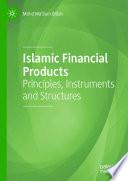
The Stability of Islamic Finance
Creating a Resilient Financial Environment for a Secure Future
The Stability of Islamic Finance main focus is on the question of the sources of financial instability which seems inherent in the conventional system. As a core component of this focus, the book will consider episodes of turbulence and instability in a historical context recalling the occurrence of such events from mid-19th century to the present. It will present various theoretical explanations along with solutions and alternative financial systems that avoid instability provided by various scholars dating back to mid-19th century to present. The book then will present and discuss the architecture of an Islamic financial system and show that at its core, this system shares many characteristics of an stable financial system proposed by Western scholars throughout history to avoid the inherent instability of the present dominant system. Particular emphasis will be placed on the present financial crisis and its causes as well the financial crisis of the 1997 in Southeast Asia, Russia, and Latin America relating these episodes to the fundamental features of the dominant system. The debt crisis of the low income countries will also be part of this discussion. It will then argue that these crises could be mitigated under an Islamic system or any other system with similar architecture.
- ISBN 13 : 1118178939
- ISBN 10 : 9781118178935
- Judul : The Stability of Islamic Finance
- Sub Judul : Creating a Resilient Financial Environment for a Secure Future
- Pengarang : Hossein Askari, Zamir Iqbal, Noureddine Krichenne, Abbas Mirakhor, Zamir Iqbal, Noureddine Krichenne, Abbas Mirakhor, Zamir Iqbal, Noureddine Krichenne, Abbas Mirakhor, Zamir Iqbal, Noureddine Krichenne, Abbas Mirakhor, Zamir Iqbal, Noureddine Krichenne, Abbas Mirakhor, Zamir Iqbal, Noureddine Krichenne, Abbas Mirakhor, Zamir Iqbal, Noureddine Krichenne, Abbas Mirakhor, Zamir Iqbal, Noureddine Krichenne, Abbas Mirakhor,
- Kategori : Business & Economics
- Penerbit : John Wiley & Sons
- Bahasa : en
- Tahun : 2011
- Halaman : 249
- Google Book : http://books.google.co.id/books?id=MRDqayU_4XcC&dq=intitle:Islamic+Monetary+Economics&hl=&source=gbs_api
-
Ketersediaan :
It will then argue that these crises could be mitigated under an Islamic system or any other system with similar architecture. This new book by a group of four Western-trained Islamic economists is greatly welcomed.









